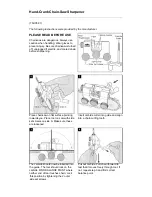
© 2020 Virginia Diodes, Inc.
—All Rights Reserved—Rev: 3 April 2020
Efficiency vs. RF Input Power
This graph shows measured data for a specific WR-10 frequency tripler at ~90 GHz. As the RF input power is increased, the
efficiency will start to increase until the efficiency achieves a maximum value. Beyond this point, the efficiency reduces as the
tripler begins to saturate.
The general shape of the c
urve is consistent with all VDI’s broadband frequency triplers. However, the scale depends on the
specific tripler design, the operating frequency and other operating conditions, for example temperature and impedance matching
with the source and load.
Efficiency versus power data can be supplied for all shipped triplers at an additional cost.
Efficiency vs. RF Input Power
0
1
2
3
4
5
6
7
8
9
10
0
50
100
150
200
250
300
350
400
450
EFf
ic
ie
n
cy
(%
)
RF Input Power (mW)
WR10X3HP Efficiency vs. RF Input Power
Figure 1: Efficiency vs. RF Input Power
The performance (efficiency vs. RF input power) is shown for a sample WR10X3HP at ~90 GHz.
Appendix
Two
App-2
Pg-9




























